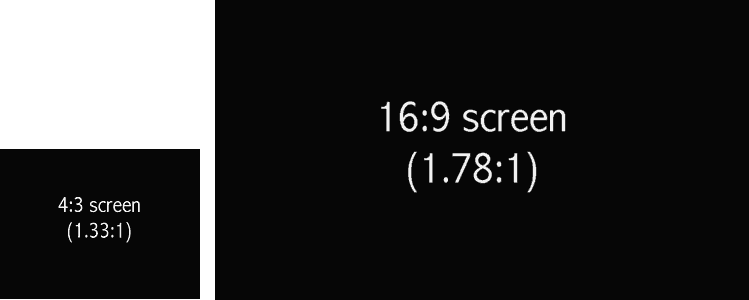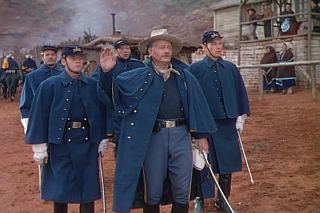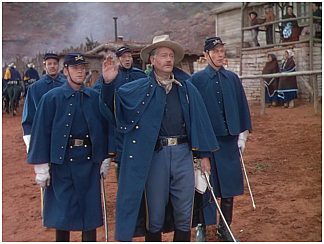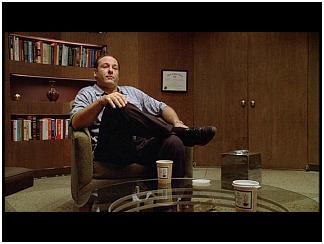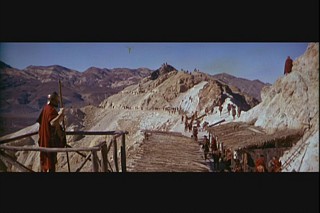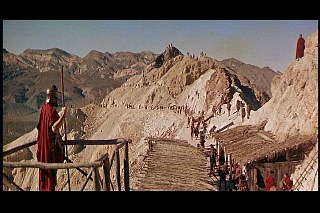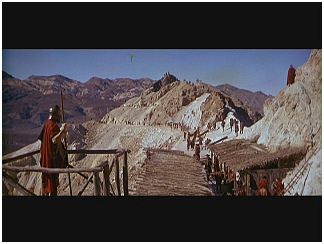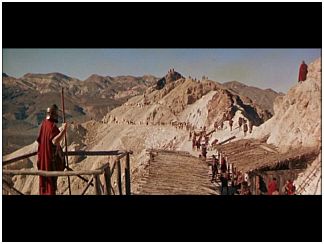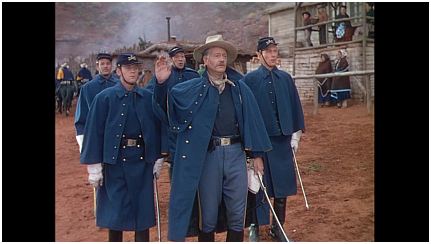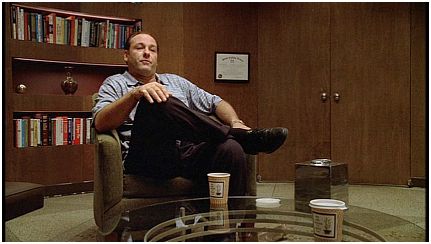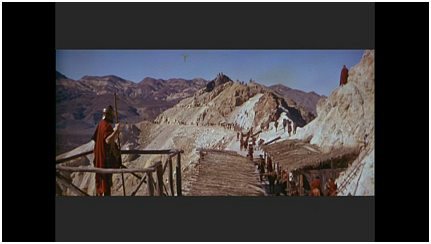Image size is not the only difference. Clarity and detail are substantially better when DVDs are "enhanced for 16:9".
Remember that I mentioned that 16:9 gear can get rid of the black bars on the sides of 4:3 programs? By using the zoom feature we can make the little Spartacus picture the same size as the 16:9 version. I'd give you an example but I just can't convey what happens when you do that. It's an ugly thing to behold, at least if you have a relatively large screen. We're using a 100" screen and it's unlikely that Universal's DVD will ever be displayed on it. But don't take this as an attack on Universal. There are other bonehead transfers that just break your heart. As an example, Fox used 65mm elements of Oklahoma! and South Pacific as well as the 55.625mm negative of The King and I in order to produce high quality transfers, and then they used the cheesy 4:3 letterbox format to make DVDs. They're bloody awful to look at on a big screen system. Is it too late to ask for a refund?
GOOD NEWS! FOX IS REISSUING THEIR LARGE FORMAT DVDS USING NEW HIGH RESOLUTION TRANSFERS!
Well it's taken me long enough to get to the point. If you don't currently own a 16:9 display you will some time in the future. And there's nothing to compare with it. It would be a shame to find you've got a bunch of DVDs that look like merde when you view them on those hi-tech pieces of electronic wizardry. So look carefully at all that small print on the back of the DVD package. Any reference to the program material being enhanced for 16:9 display is your assurance that you're going to get a bigger thrill from the DVD when you upgrade, rather than getting a sick feeling in the pit of your stomach.
Read The Small Print Before Buying
That's what Caveat Emptor is all about.
 Universal Home Video information block for Spartacus
Universal Home Video information block for Spartacus
It states 2.21:1 Widescreen but no mention is made of the disc being anamorphic or enhanced for 16:9, so that translates to standard 4:3 letterbox.
 Criterion Collection information block for Spartacus
Criterion Collection information block for Spartacus
You've got to squint to see it, but the all important information telling you that the disc is enhanced for 16:9 widescreen TVs is there, and it delivers oh, so much!
An Interesting Comparison
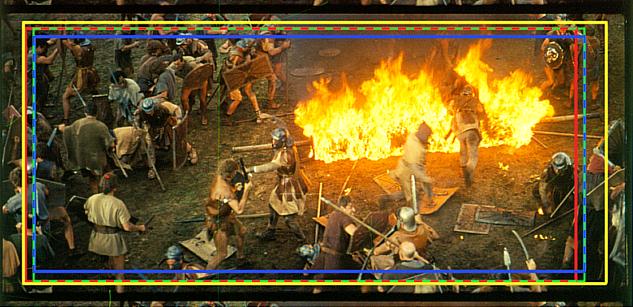
Film Courtesy of Robert A. Harris
There's nothing especially wrong with the extraction area used by either Universal or Criterion, but it is interesting to see how they differ.
 | Area used in Universal Home Video transfer |
 | Area used in Criterion transfer |
 | Standard 35mm extraction area |
 | 70mm projector aperture dimensions |
Universal copied more information than would be seen in either a 70mm or 35mm print, more than would wind up on the screen in a theatre. And while they state on the box that the transfer is 2.21:1, in fact it's 2.35:1 due to the fact that image information that is normally hidden by the magnetic sound stripes has been included on the sides. This is probably welcome by some film enthusiasts, but your Curator doesn't think it's an especially good idea considering the fact that the transfer was not in 16:9 anamorphic and the greater extraction area diminishes the ability to record fine detail. Criterion's transfer, while infinitesimally off-center, conforms to the 70mm projector aperture dimensions.
The good news is that DVD quality has been continually improving, and most post 1999 offerings from the major studios really shine, but beware discs sold by little known companies, they will transfer from bad VHS tapes or laserdiscs. Despite the efforts of evil corporations like Blockbuster Video to force the studios to produce nothing but pan and scan product so they don't have to educate their staff to educate their customers that letterboxing is beneficial, there has been a steady increase in the use of dual layer and anamorphic technology to turn out some exceptional looking discs. Despite it's improved image resolution, DVD still isn't a high definition format, but with proper equipment, the quality, even on extremely large systems, is breathtaking. The next major step in home video may actually look as good as film. And it kind of hurts to say that.
Remember, widescreen movies didn't become standard until after 1953, so films made before that time need not be 16:9 to look their best.
Return To The Regular Museum Programming


